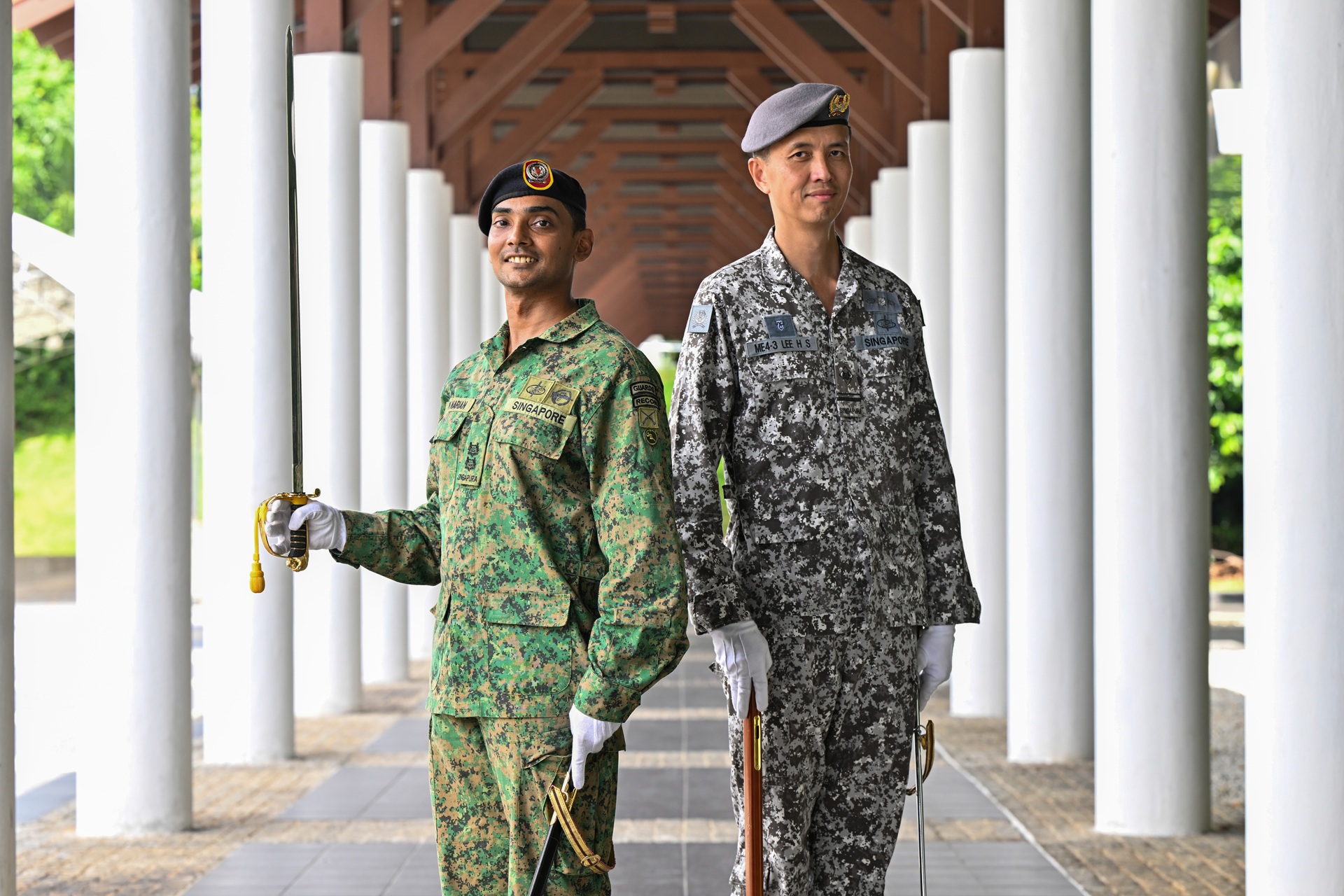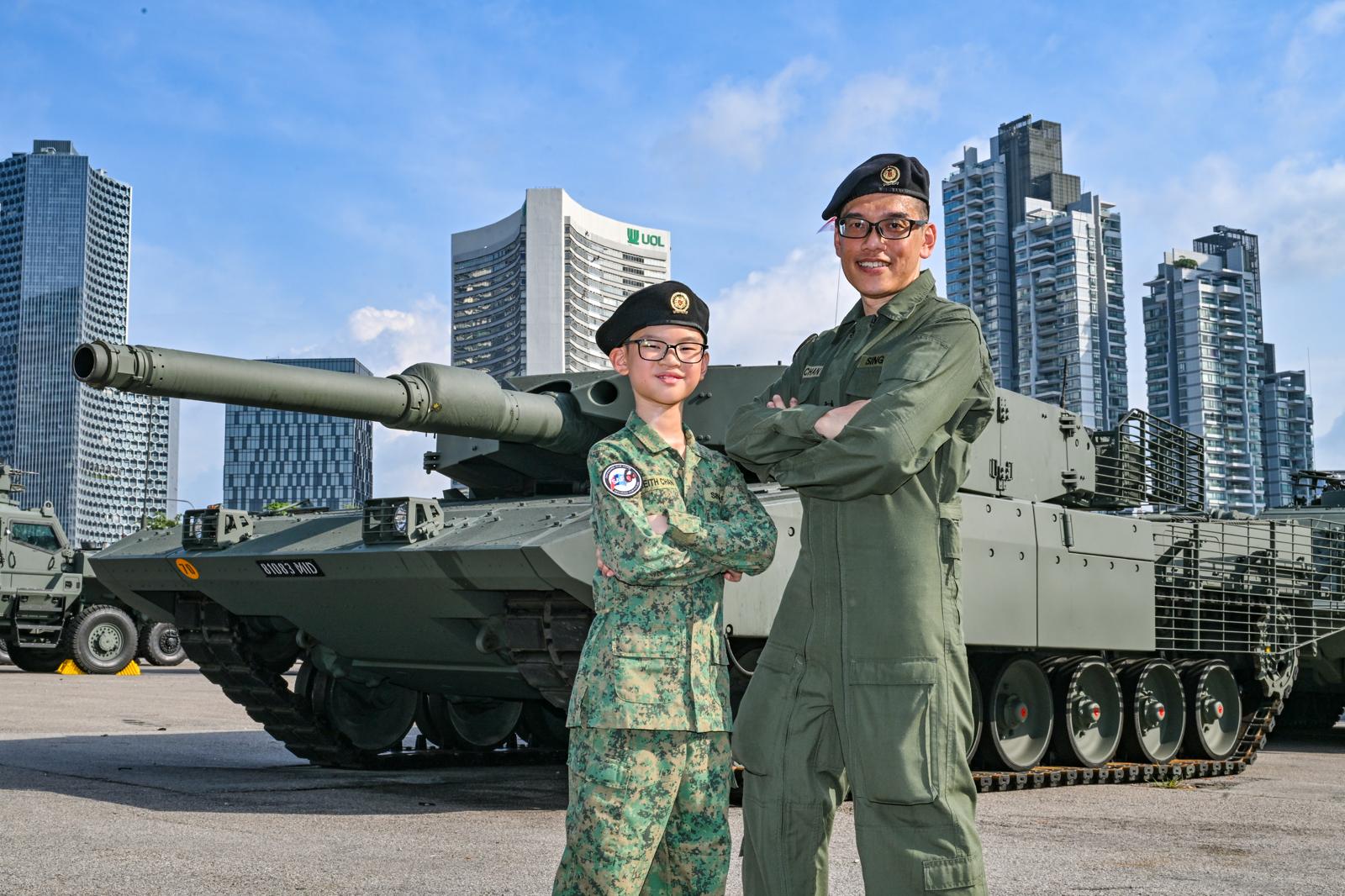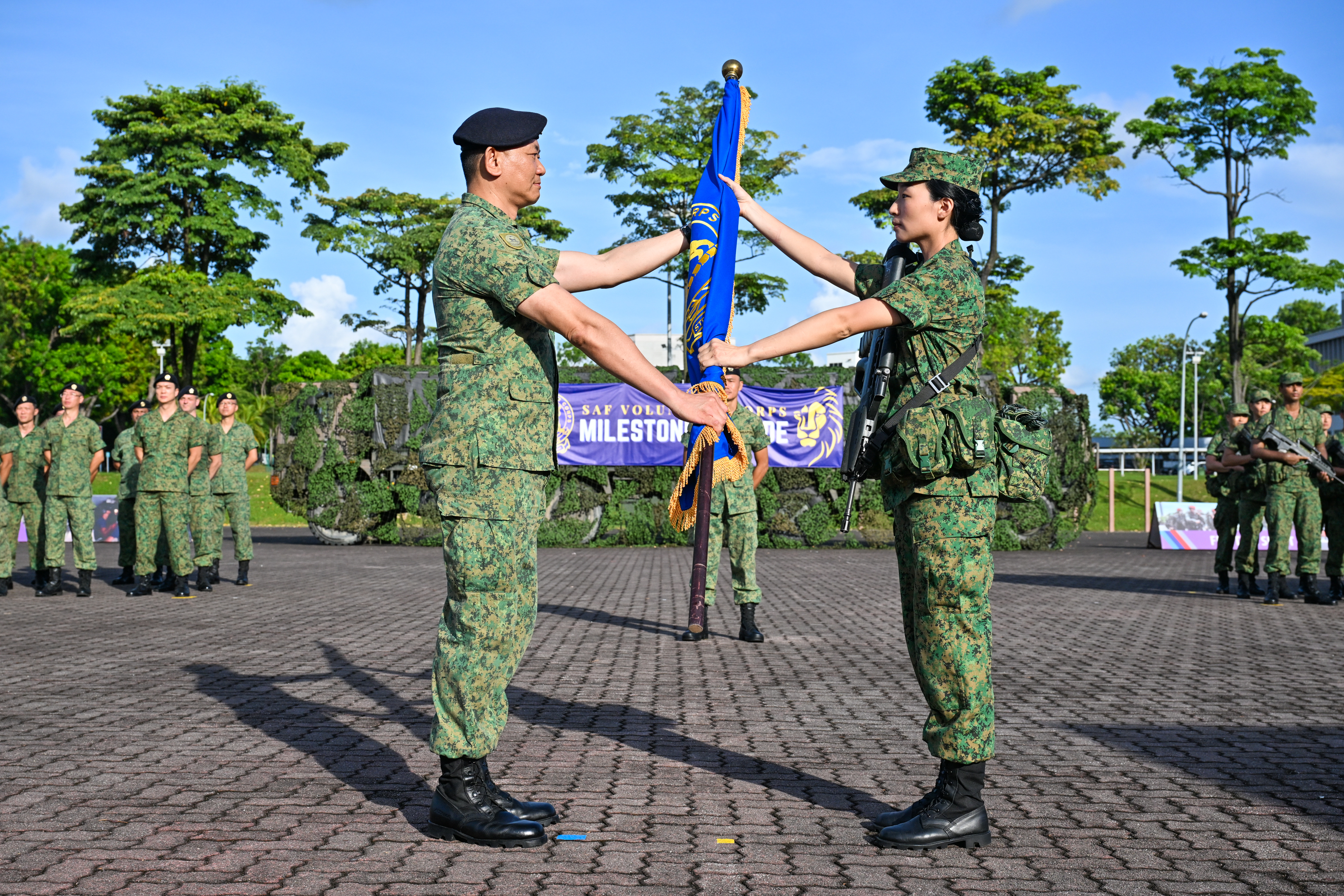A NEW WAY TO SERVE
STORY // Benita Teo
PHOTO // PIONEER Photographers
The SAF is opening its doors to the broader community who are not National Service (NS)-liable but have a strong desire to contribute to national defence.
Have you always wanted to trade in your school blouse and skirt for military fatigues and join Dad for his In-Camp Training (ICT)?
Perhaps you often find yourself listening with envy as your male colleagues share stories about their NS days, and wish you could be one of them.
Or maybe you recently made Singapore your home, and would like to do your part in keeping it safe for your family and friends.
You'll now have the chance to fulfil these wishes.
Come 2015, the Singapore Armed Forces (SAF) will welcome more people into its family of Regulars, Operationally Ready National Servicemen (NSmen) and Full-time National Servicemen (NSFs).
With the establishment of the SAF Volunteer Corps (SAFVC), non NS-liable Singaporeans and Permanent Residents (PRs) - such as women, first-generation PR sand new citizens - will now be able to contribute to national defence, show support for NS, and deepen their understanding and ownership of national defence.
During his Committee to Strengthen NS Press Conference on 22 May, Defence Minister Dr Ng Eng Hen noted that through the year-long process of engaging the public and listening to their ideas and feedback, committee members met with "many, who do not have NS obligations, but wanted to contribute to national defence". Thus, the SAFVC, a uniformed volunteer scheme, was set up following the committee's recommendation.
New look, old traditions
The SAFVC was officially set up in end-September, and is helmed by Commander SAFVC, Colonel (COL) Mike Tan.
Headquarters (HQ) SAFVC is located in Maju Camp, where training will also be held.
The SAFVC may be new, but it follows in the footsteps of a long and distinguished tradition of volunteerism for national defence.
Beginning with the Singapore Volunteer Rifle Corps (a private organisation established in 1854 to combat lawlessness), the corps of volunteers evolved over the next 48 years into the Singapore Volunteer Corps (SVC), the SAFVC's predecessor.
The SVC played an important role forming the Singapore Military Forces in 1953 together with Regulars and part-time national servicemen.
The volunteer units were then subsumed into the People's Defence Force (PDF) in 1965.
With the subsequent growth of NS and the SAF, the number of volunteers declined, and the last Volunteer battalion, 101 PDF, held its final parade in 1984.
As homage to the illustrious 160-year history of Volunteer Military Service in Singapore, the SAFVC logo incorporates elements from the original SVC coat of arms, such as the circular shield, banner and laurel.
Finding the right fit
Applications to the SAFVC began on 13 Oct and within a week, more than 200 Singaporeans and PRs had dropped off their forms at the Army Recruitment Centre (ARC) or signed up online. Dr Ng revealed this on his Facebook page, adding that he was "happy with the encouraging response so far".
COL Tan echoed Dr Ng's comments, remarking that the growing numbers were indeed encouraging. The SAFVC plans to recruit three batches of volunteers in the first year, with 30 to 50 enlistees in the inaugural batch commencing training on 23 Mar 2015.
After being shortlisted, applicants will have to undergo an interview as well as a medical screening before they are accepted into the SAFVC. COL Tan plans to oversee the interview process, and recognised that it would be an onerous task.
"Certainly, the SAFVC is not for everybody; (for instance) if you are not the outdoorsy type, you may find that it is not your cup of tea. There are other MINDEF (Ministry of Defence) volunteer schemes (available).
"That's why the interview is so important - I want to make sure that the volunteers we select really want to be here, and will also fit in with us." He added that motivation and aptitude are crucial factors in determining the applicants' suitability.
COL Tan also noted that although there is no minimum commitment period for volunteers, those who indicate that they are prepared to commit for the long term will be considered more favourably.
Welcome to the uniformed life
Upon successful application, volunteers will receive their letters of enlistment and embark on a three-phase training programme, designed to give them a taste of Basic Military Training (BMT) and equip them with the skills necessary for their respective roles.
The SAFVC Volunteers (or SVs, as the enlistees are known) will undergo a two-week Basic Training (BT), followed by a one-week Qualification Training (QT). Some will be required to attend another week-long Advanced Training (AT) to further prepare them for their vocations.
The two-week stay-in BT is a module common to all SVs.
It aims to develop in the SVs a basic appreciation of the SAF and understanding of national defence.
The SVs will have the opportunity to try their hands at firing a Singapore Assault Rifle 21, throw a live hand grenade, and even go through a field camp.
Training will be supervised by COL Tan, and led by a Head of Training and a company commander. They will be assisted by a team of experienced trainers from BMT Centre and parts of the Infantry.
COL Tan emphasised that "the idea is not to train someone from a civilian to a soldier; that will take nine weeks (the length of BMT). However, the two weeks is sufficient for them to have an introduction to NS and learn about the military ethos and what it means to wear a uniform".
Currently, there are plans to offer the modular option of completing the BT over a series of weekend days instead of the continuous fortnight stay-in. This option would be helpful for volunteers with heavy school, work or family commitments.
Although the curricula for both the continuous and modular options are similar and will equip the SVs with the necessary knowledge and skills, COL Tan encouraged those who could afford the time to choose the stay-in option for "the most complete experience", as it includes the field camp component.
A unique rank structure was created for the SAFVC Volunteers (SVs). As their contribution are different from those of Regulars and NSmen, there is no comparison between the SV rank and others in the SAF. It also differentiates them from SAF Volunteers, former NSmen who continue to service past the statutory age.
New enlistees begin as SV (Trainees), and will be promoted to SV1 upon completion of their Qualification Training. Subsequent promotions are dependent on years of service, as well as conduct and performance.
In-depth training
After BT, SVs then move on to QT, where they will train under the respective domain experts to prepare for their specific roles. One of the trainers they might meet is Military Expert (ME) 5-1 See Yen Ling, a Nursing Officer at the SAF Medical Training Institute. ME5-1 See trains doctors and medics when they return for their annual ICT, and will train SVs who sign up as medical trainers.
Elaborating on the second phase of training for medical trainers, ME5-1 See said: "As medical professionals in hospitals, the types of cases they see are different from those in the military.
During QT, they will be introduced to the Medical Corps and become familiar with our work environment, such as the equipment, simulation labs and outfield environments.
"Upon completion of the QT phase, SVs will be considered full-fledged SAFVC Volunteers and can begin to be deployed to SAF units. However, some roles, such as the Auxiliary Security Trooper (AST), will require the AT.
While AST trainees will gain proficiency in rifle handling and learn when to make use of their weapons during the QT, an additional week at the AT is necessary for them to acquire the required knowledge and learn the application of their skills - such as apprehending and securing targets.
Service Benefits
- Meal & transport claims
- 50 e-Mart credits per year of completed service
- SAF Group Term Life Insurance coverage during call-ups
- Medical and dental treatment at SAF medical and dental centres during call-ups
- Eligibility for associate membership at SAFRA and NS Resort & Country Club
Part of the family
SVs can choose from 17 roles in nine categories. They will typically be called up to serve seven days annually, alongside servicemen and women from the Army, Navy and Air Force, donning the SAFVC formation patch on their respective green, grey or blue uniforms. Some roles, such as those in engineering, medicine or law, require prior work experience, while others like the AST, InfoMedia Staff and Bridge Watchkeeper are open to all.
Working with SVs will be a new experience for Regulars, NSmen and NSFs alike. However, COL Tan believes the experience will be beneficial to all.
ME5-1 See agreed: "I look forward to working alongside the SVs, because they will be able to share their experience in their respective fields with us. This will, in turn, enrich our training as well."
During call-ups, the SVs will report directly to the various SAF units which they are attached to. They will receive instructions from their Regular and national servicemen commanders.
"The section or mission commander is expected to take charge of the mission and guide the SV in becoming an effective member of the team. This is because he has undergone two years of NS and several ICTs and is therefore better trained and more experienced (in fulfilling missions)," COL Tan explained.
He added: "This is why NS will always be the cornerstone of national defence and will not be replaced by the SAFVC. They are trained much more rigorously."
Nonetheless, "We hope the NSmen will come to respect and appreciate the SVs because, while they may not be as intensively trained, they come with life and career experience," said COL Tan. "They will also bring another set of eyes and perspectives to situations that have become commonplace to us."
Interested volunteers may obtain their hardcopy forms from ARC, or download the electronic forms from the SAFVC website (www.mindef.gov.sg/safvc) and email them to safvc@defence.gov.sg. Applicants must be 18 to 45 years old, and will be eligible to serve from the ages of 18 to 50.
"I'm a member of my school's History and Strategic Affairs Society, and studying about current affairs and history got me interested in the military.
I started thinking about my own country's defence and how I can contribute more to it.
I've applied for the roles of Auxiliary Security Trooper (AST) and in Naval Operations. Being an AST will allow me to engage directly with the community. As for Naval Operations, my time as a National Police Cadet Corps (Sea) member in secondary school has sparked my interest in all things maritime.
I believe that anyone can contribute to national defence, but I'm particularly attracted to the military because it requires a lot of sacrifice on the part of those who choose to uphold it.
Not everyone can do it, but if I can, then I will. That my mother was a Staff Sergeant and worked in the Army for 11 years assures me that I, too, can play a role in defence."
"I've been living in Singapore for nine and a half years. My wife is Singaporean, and we are having a baby - a boy, in March. My son will have to serve NS when he grows up, and it's important (to me) that his dad had gone through something similar, even if the SAFVC is not (exactly) the same as NS. I want to inspire him to have a greater appreciation of the SAF.
It will also allow me to have a greater affinity with everyday Singaporeans. One of the first questions I find that Singaporean men ask each other when they meet is, 'Where did you serve NS?' It's like a boys' club, and I'd like to be a part of it.
I spent 12 years in the New Zealand Army Territorial Forces (now called the Army Reserve). My whole family has served in some capacity in the New Zealand military, from my grandfather to my father and uncles to me, my brother and cousins. It's part of our family DNA and I want that type of connection for my son with the SAF.
Singapore is a safe place to live and for that I want to give back. It's about investing time and effort into something you believe in.
"I always imagines myself being in the uniform service.
While in the college in India, I spent about five years in the Army wing of the National Cadet Corps, where I received the highest-level certification: the C Certificate.
I came to Singapore in 1997 on an Employment Pass to work as a restaurant manager. After my wife and I got our PR in 2004, it got us thinking that this is where we really belonged now. My eight-year-old daughter goes to a local school too.
As a new citizen, I feel that Singapore has given me a lot, by way of stability and security for my family and business.
If I have the opportunity to give back, I should give it a try. I've told this to my daughter too: "'Girl, we have taken this place as our second home. When the time comes, we (should) give back to the society and nation.'"
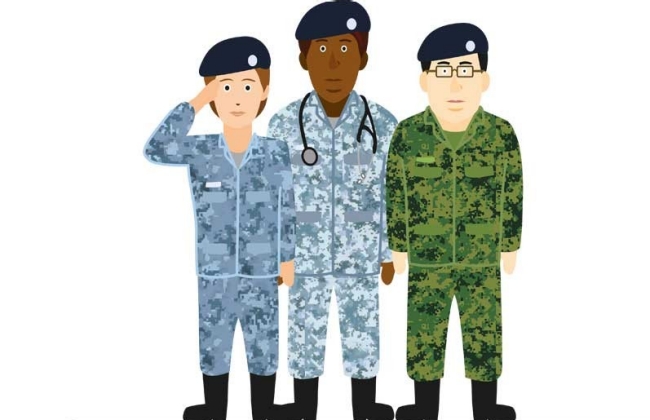
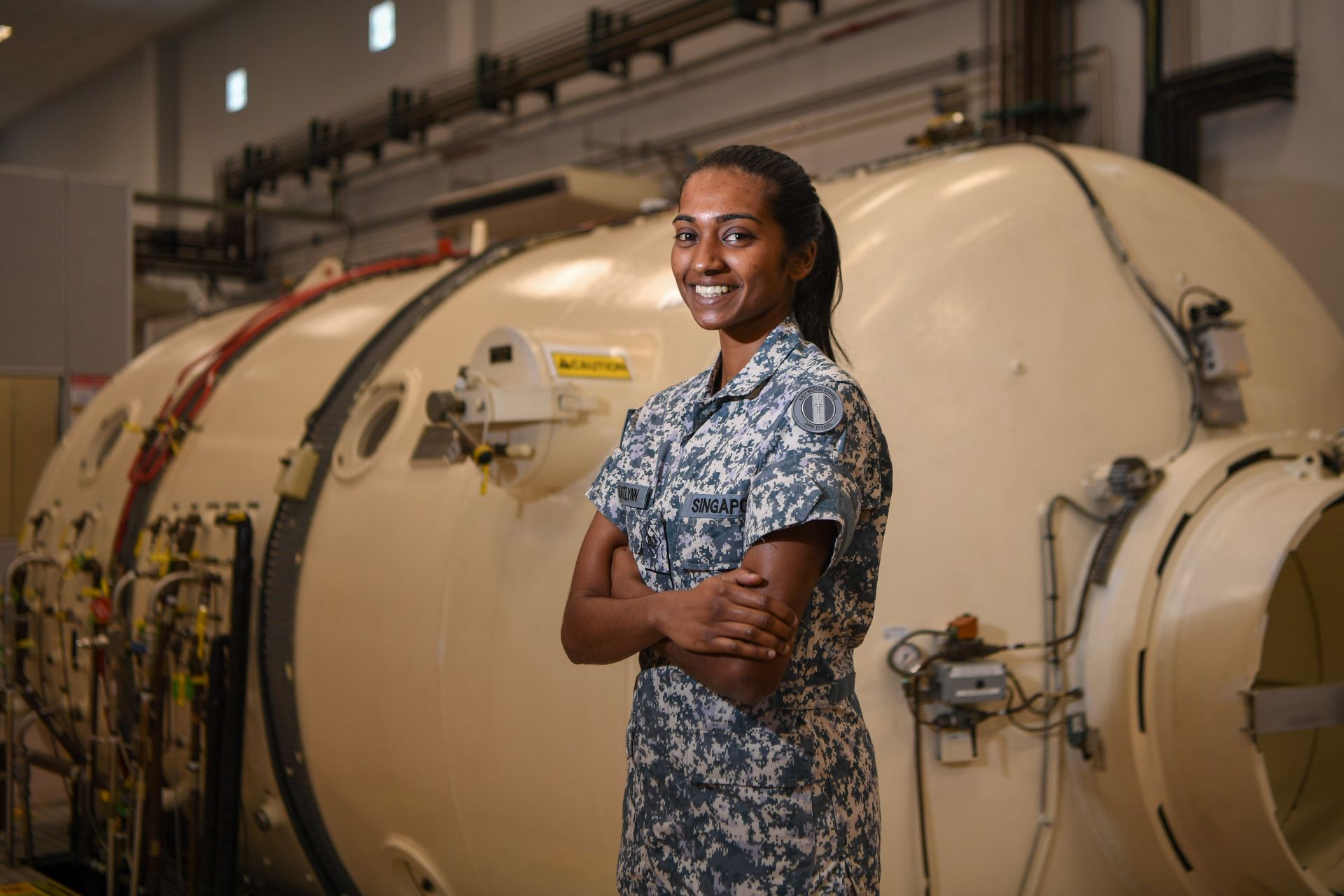
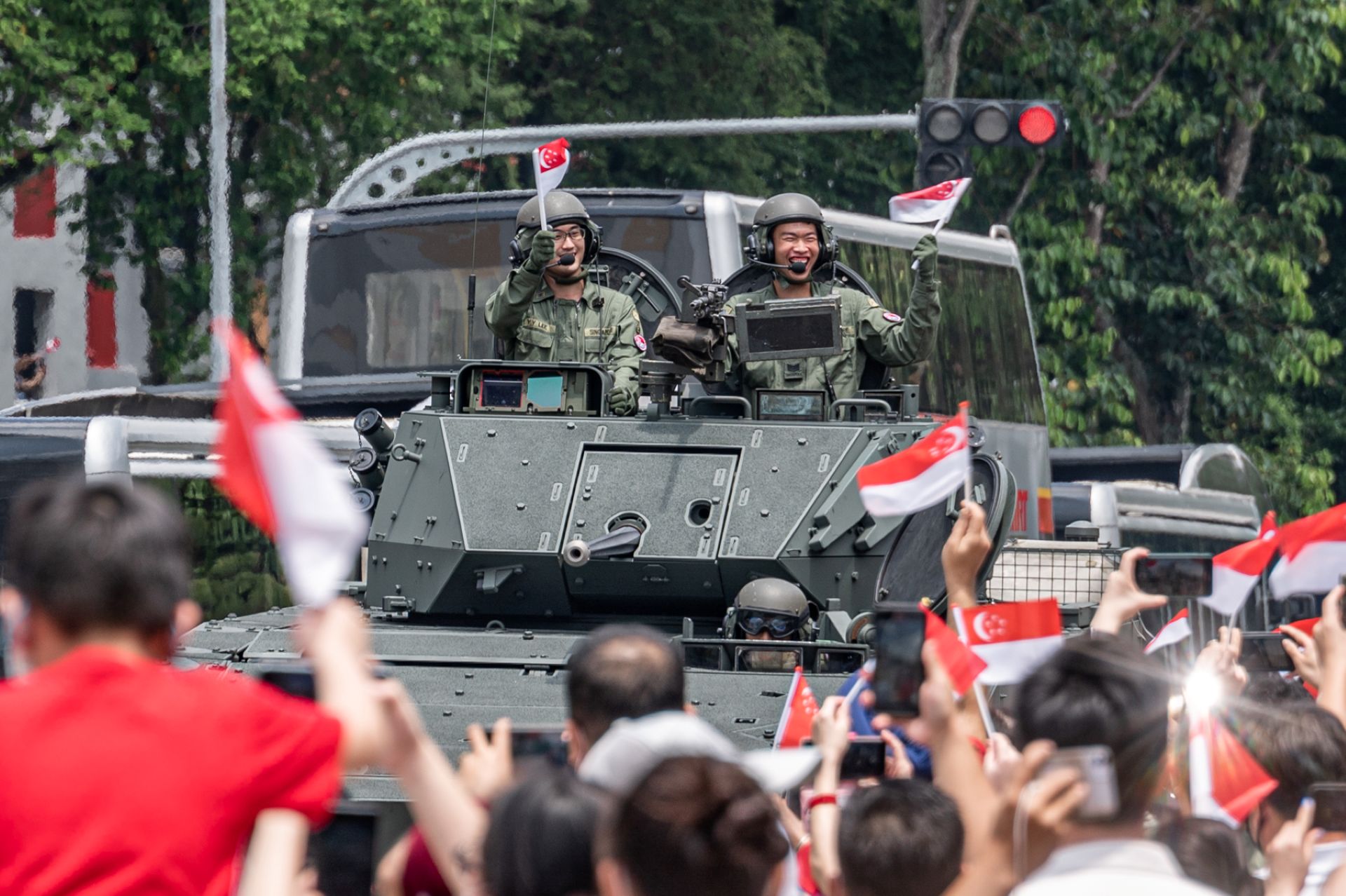
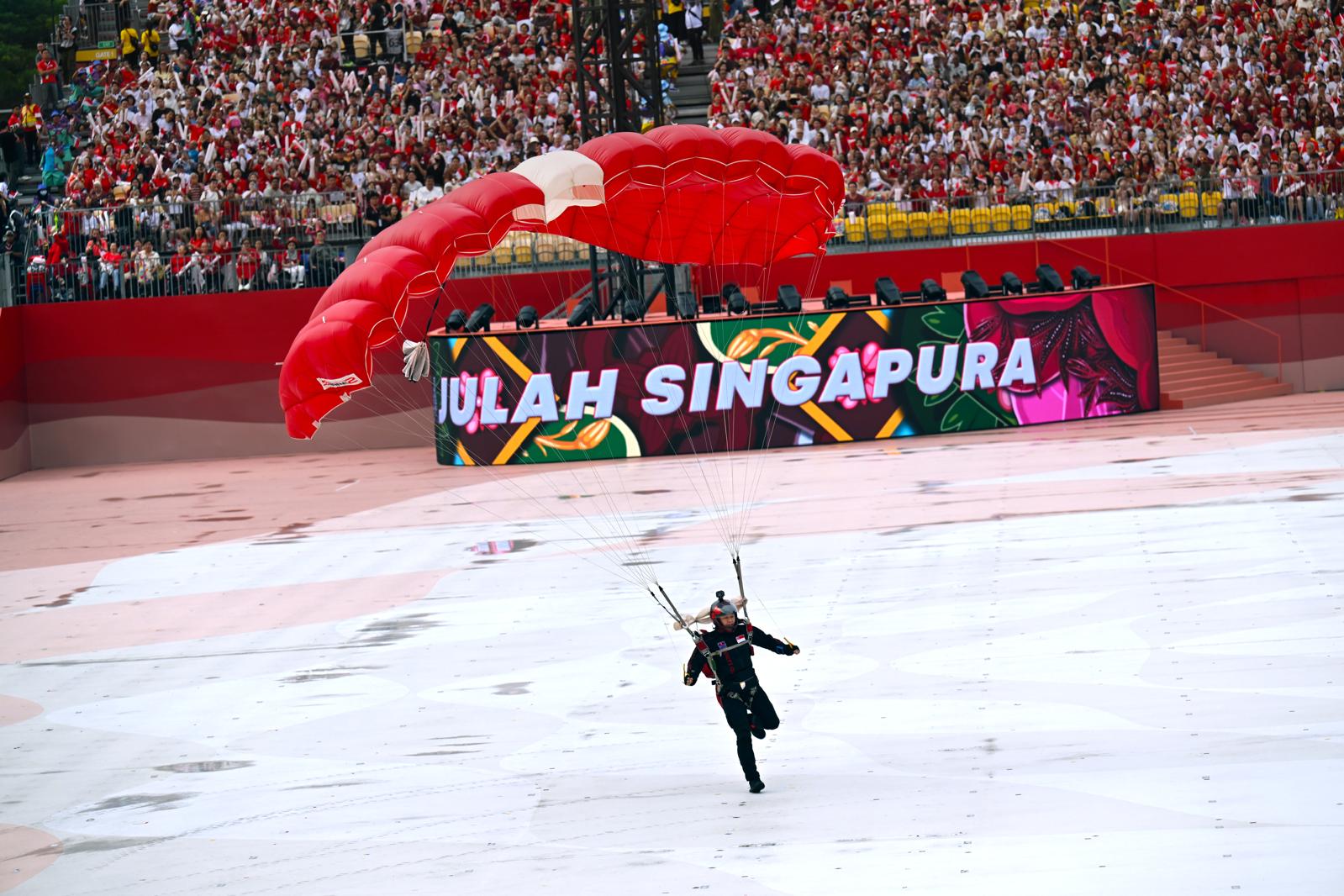
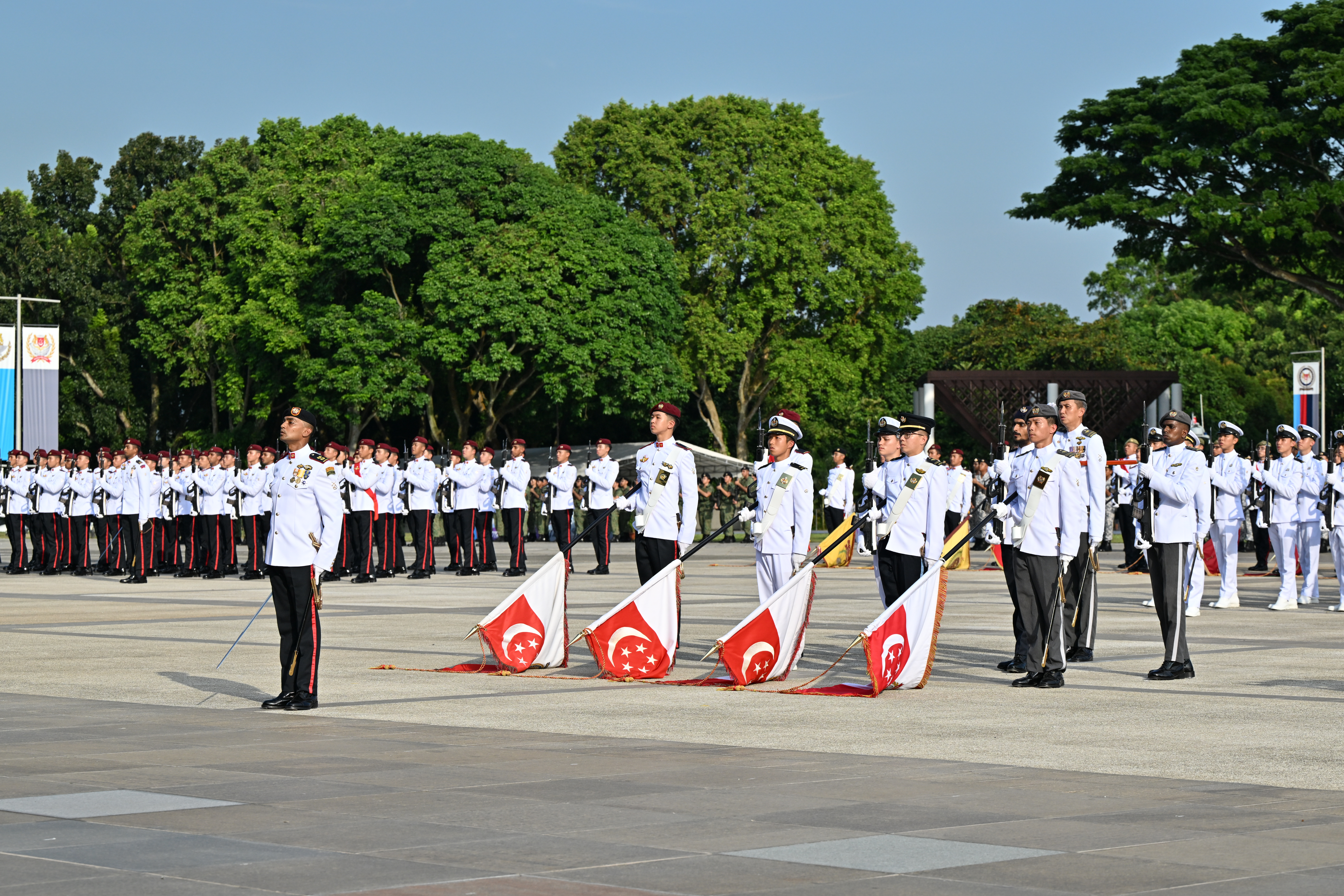
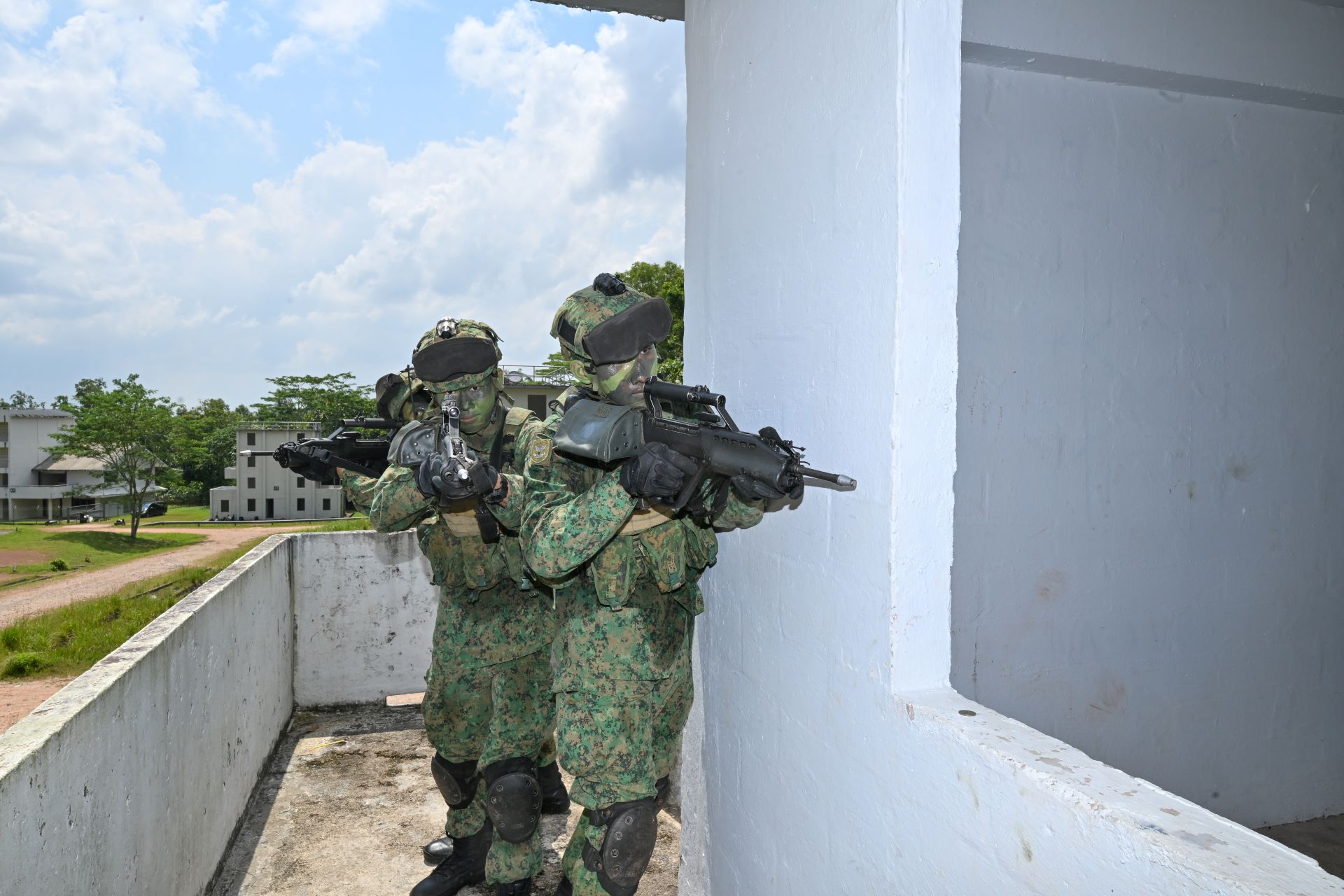
.jpg?sfvrsn=b5383902_1)
.jpg?sfvrsn=4eb1b86e_1)
